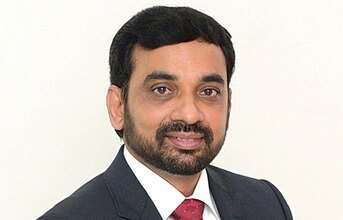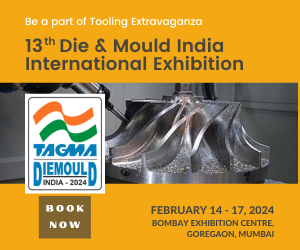
In the realm of innovation and progress, the ‘Make in India' initiative emerges as more than a mere historical milestone— it stands as the cornerstone of a revolutionary future. We find ourselves in the era of Amrit Kaal, a pivotal moment where our collective efforts are dedicated to shaping an India that boasts the epitome of global infrastructure. As we stand at the nexus of opportunity and responsibility, envisioning the India of 2047 is not a distant dream but a reality we are sculpting today. At the helm of this transformative journey is SWITCH Mobility, where we transcend the conventional role of automotive manufacturers as active torchbearers, propelling India towards a future defined by globalisation, sustainability, and leadership in manufacturing.
Beyond a Billion: The Indian narrative has evolved beyond sheer scale. Today, we are witnessing a tectonic shift where ‘Made in India' resonates with quality and innovation. The automotive industry is a stellar example. It has become a global leader, surpassing industrial giants like Germany and Japan, and boasting record-breaking export growth. India's auto sector is racing towards the trillion-dollar mark this decade. This phenomenal growth isn't a result of volume; it's propelled by an unwavering commitment to quality. Government initiatives such as FAME (Faster Adoption and Manufacturing of Electric Vehicles in India), the Production-Linked Incentive (PLI) scheme, and PM-eBus Sewa are drawing investments, fostering a vibrant ecosystem of innovation and agile startups.
From ICE to e-Buses, Indian streets echoed with the rumble of diesel buses, their emissions casting a thick haze of smoke over the nation. Recognising the dire need for change, we built electric buses indigenously, shaping the trajectory of urban mobility. We meticulously designed from the ground up, leveraging Indian engineering expertise to deliver superior performance and efficiency. Our e-buses aren't an electric iteration of their diesel predecessors.
In FY 2019, there were only 54 electric buses registered across the nation. The electric bus market in India is surging, fuelled by a meteoric rise of 1,919 units sold in FY 2023. A major shift is underway in India's transportation landscape, propelled by a commitment to electric mobility.
The Indian government initially set the target of deploying 50,000 electric buses through its National Electric Bus Programme (NEBP), launched in 2022. However, as of May 2023, only 1.25 per cent of the 3,59,432 registered buses had transitioned to electric. At SWITCH Mobility, we see it as an opportunity for accelerating India's e-bus adoption. Our journey so far is a glimpse into a future where clean air and silent streets are not aspirations but realities. We are not just electrifying India's mobility landscape; we are also writing the blueprint for a healthier, more sustainable tomorrow.
While the future of Indian manufacturing gleams with promise, it's important to acknowledge the potential challenges that we need to overcome:
While India aspires to achieve significant electric vehicle (EV) penetration by 2030, with ambitious targets like 70 per cent of commercial cars, 40 per cent of buses, and 80 per cent of two and three-wheelers going electric, a NITI Aayog report in collaboration with RMI India suggests current growth rates might fall short. India needs to invest significantly in roads, ports, and logistics infrastructure to support its manufacturing ambitions.
• Investment in the talent pipeline by empowering freshmen through comprehensive training and mentorship programmes is essential to meet the current demand for skilled labour in advanced manufacturing, like electric vehicle production. This ensures that future leaders are nurtured, building a resilient workforce.
• OEMs should explore innovative financing models through collaborations with financial institutions, depending on their needs and capabilities. This might result in the creation of specialised loan products with favourable terms, including lower interest rates and extended repayment periods.
Sustainable Mobility An Opportunity at Scale: Beyond conventional metrics, the true value creation within manufacturing remains latent. ‘Make in India 2.0' focuses on propelling the sector towards escape velocity. Green mobility emerges as a nascent yet promising area.
SWITCH Mobility Leading the Charge: Our electric buses, exemplified by our pioneering model, the SWITCH EiV 22, India's first double-decker electric bus, epitomise our commitment to this vision, proving that indigenous solutions can not only compete with but surpass their global counterparts. Comparison of our double-decker buses to singledecker buses reveals an astounding advantage—they can carry 85 per cent more passengers. This innovation not only addresses the pressing need for sustainable and efficient public transportation but also aligns with our mission to redefine the norms of clean mobility. It demonstrates how a bold vision and meticulous execution can rewrite the rules of clean mobility, offering a significant breakthrough.
Navigating manufacturing landscapes: The global marketplace is constantly evolving. We must be agile, adapting production processes and product offerings to meet changing market demands. Our modular vehicle platforms allow us to quickly customise buses for diverse customer needs, showcasing our adaptability.
Technological advancements are key to sustainable growth. With a robust presence in the UK, we strategically collaborate with our teams, facilitating the seamless exchange of cutting-edge technology and valuable knowledge. This synergy accelerates our progress in manufacturing vehicles, ensuring swift and impactful advancements as we continue our pursuit of excellence.
Amrit Kaal and Beyond: Embracing the spirit of Amrit Kaal and envisioning a future where we not only make and design in India but also brand in India, thereby setting a global benchmark. Drawing inspiration from the likes of indigenous players, we tap into global skills while staying rooted in our rich design heritage. Our brand, endorsed by the Prime Minister and propelled by technological feats like Chandrayaan and the International Solar Alliance (ISA), initiatives championed by India, has already begun its ascent on the global stage. The automotive industry, with its established context, is poised to take advantage of this upward trajectory.
Harnessing the potential of India's demographic strength—our youthful population and abundant workforce— we navigate the transition towards new energy, embracing electric mobility and innovative power sources. India is poised to ascend to the top position in the global arena.
As India aspires to attain the pinnacle of global automotive manufacturing, its second-largest highway network stands as a critical enabler, seamlessly connecting production centres, ensuring efficient supply chains, and positioning the nation as a strategic player in the international automotive landscape.
Prime Minister Modi's vision of ‘Make in India, For the World' holds immense promise. India's stellar image as a frugal innovator and a reliable partner, positions us perfectly to become a global hub for technologically advanced products. As the golden era of ‘Amrit Kaal' dawns, ‘Make in India' offers an unprecedented opportunity to not only fulfil this vision but also propel India's Net Zero goal ahead of schedule.
Amrit Kaal is not just a goal; it is a commitment to transform India into the world's foremost automotive manufacturing hub, driven by the dynamism of our youth and the collective power of our workforce. Together, let us make ‘Made in India' a symbol of excellence not just for the next 25 years but for centuries to come.





































